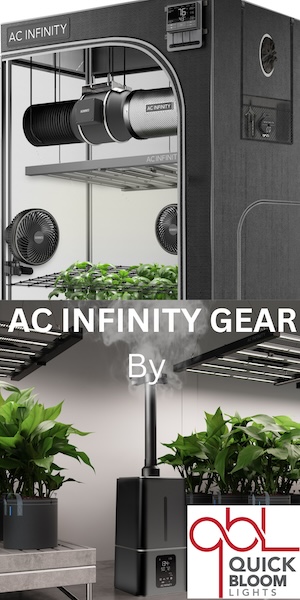- User ID
- 2953
I have noticed quite a few people relying on phone apps to gauge PAR and DLI. When comparing these apps to readings from an apogee, they can vary greatly depending on your phones light sensor.
If anyone is looking for a more reliable way to measure par with nothing but a lux meter, you can use the coefficient at which a light source converts luminous flux (flux visible to our eyes) into PAR.
For example, a CMH is the most efficient at converting luminous flux into PAR at a coefficient of 0.017. Your average 3000kish LED will be around 0.0155-0.016, and LEDs with more blue (5000k for example) in the spectrum will be slightly less efficient at converting luminous flux into PAR (around 0.14-0.15).
Reason being that blue/white light emits more luminous flux than red light, but red light puts out more PAR per lumen, so lights with more 660nm and far red diodes will put out less luminous flux, but that spectrum is more efficient photosynthetically.
I had some seriously out of whack readings using photone and ppfd apps. Using a mates apogee these coefficients stack up within a few percent, and end up far more accurate than phone apps.
Take your lux reading and multiply it by 0.016 for most LEDs around 3000-3500k. Eg, 35000 lux X 0.016 = 560umol/s. A CMH will put out around 600umol/s for the same luminous flux reading, whereas a 6500k veg light will put out around 520umol/s.
Just thought this could come in handy for people that want to get a relatively accurate sense of PAR and DLI without having to fork out for an apogee.
Best bet is to separate your canopy into 20-30cm squares, take a bunch of readings in the centre of each square and average the PAR reading. Use the averaged reading and input into a DLI calculator (I use the one on waveform lightings site, but there's heaps) for a more accurate DLI reading.
I found most apps (using my phone's sensor) would max out around 650-700umol/s and give me a massive underquote.
If anyone is looking for a more reliable way to measure par with nothing but a lux meter, you can use the coefficient at which a light source converts luminous flux (flux visible to our eyes) into PAR.
For example, a CMH is the most efficient at converting luminous flux into PAR at a coefficient of 0.017. Your average 3000kish LED will be around 0.0155-0.016, and LEDs with more blue (5000k for example) in the spectrum will be slightly less efficient at converting luminous flux into PAR (around 0.14-0.15).
Reason being that blue/white light emits more luminous flux than red light, but red light puts out more PAR per lumen, so lights with more 660nm and far red diodes will put out less luminous flux, but that spectrum is more efficient photosynthetically.
I had some seriously out of whack readings using photone and ppfd apps. Using a mates apogee these coefficients stack up within a few percent, and end up far more accurate than phone apps.
Take your lux reading and multiply it by 0.016 for most LEDs around 3000-3500k. Eg, 35000 lux X 0.016 = 560umol/s. A CMH will put out around 600umol/s for the same luminous flux reading, whereas a 6500k veg light will put out around 520umol/s.
Just thought this could come in handy for people that want to get a relatively accurate sense of PAR and DLI without having to fork out for an apogee.
Best bet is to separate your canopy into 20-30cm squares, take a bunch of readings in the centre of each square and average the PAR reading. Use the averaged reading and input into a DLI calculator (I use the one on waveform lightings site, but there's heaps) for a more accurate DLI reading.
I found most apps (using my phone's sensor) would max out around 650-700umol/s and give me a massive underquote.
Last edited:





